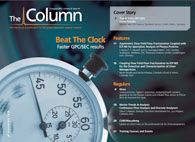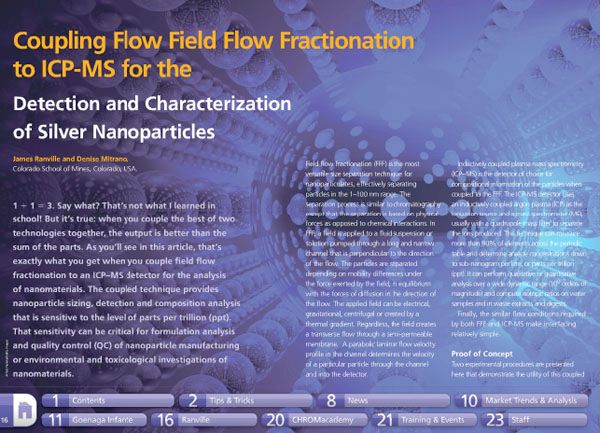Coupling Flow Field Flow Fractionation to ICP-MS for the Detection and Characterization of Silver Nanoparticles
The Column
1 + 1 = 3. Say what? That's not what I learned in school! But it's true: when you couple the best of two technologies together, the output is better than the sum of the parts. As you'll see in this article, that's exactly what you get when you couple field flow fractionation to an ICP-MS detector for the analysis of nanomaterials.
1 + 1 = 3. Say what? That's not what I learned in school! But it's true: when you couple the best of two technologies together, the output is better than the sum of the parts. As you'll see in this article, that's exactly what you get when you couple field flow fractionation to an ICP-MS detector for the analysis of nanomaterials.

Retaining Talent in Field-Flow Fractionation: An Initiative
The authors present their motivation for establishing the Young Scientists of FFF (YSFFF) initiative within the FFF community.
Developments in Field‑Flow Fractionation Coupled to Light Scattering
December 8th 2020Field-flow fractionation (FFF) coupled to light scattering is a powerful method to separate and characterize nanoparticles, proteins, and polymers from a few nanometres to a few micrometres. The technique is one of the few that can cover the full size range of nanomaterials and provide high-resolution size distributions and additional characterization. New developments in FFF enhance performance and productivity.
Field-Flow Fractionation: Virtual Optimization for Versatile Separation Methods
August 8th 2017Flow-field flow fractionation (flow-FFF) offers highly versatile separations for the analysis of complex fluids, covering a size range of macromolecules and particles from 1 nm to 10,000 nm. However, flow-FFF is often perceived as a difficult technique to learn because of the multiple parameters available for adjustment. Recent advances in software for simulating flow-FFF overcome this obstacle, enabling the virtual optimization of flow-FFF methods and opening up the power of flow-FFF separations to non-experts. An added benefit is the ability to easily analyze particle size distributions by elution time from first principles.






